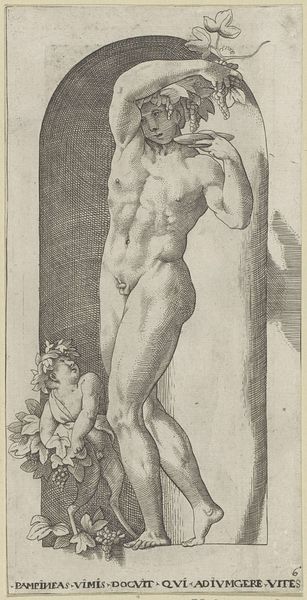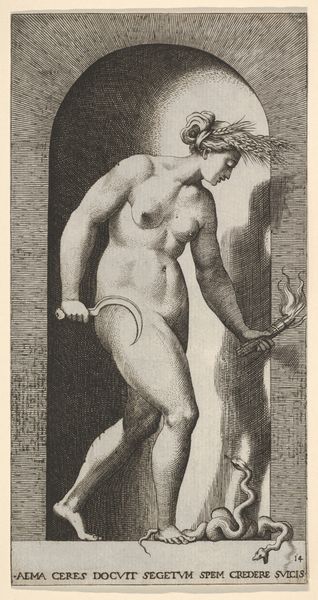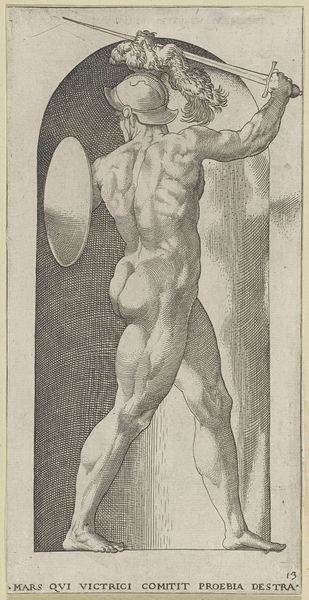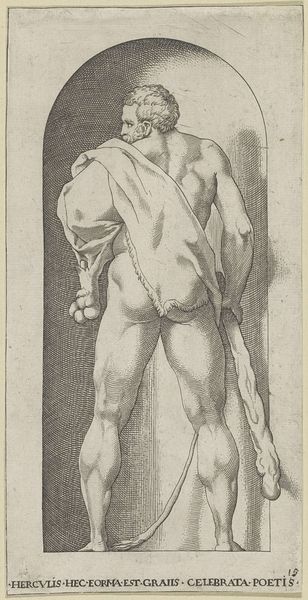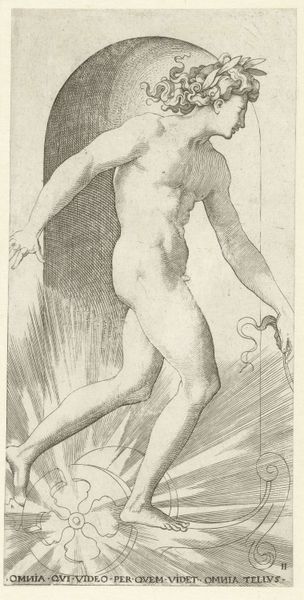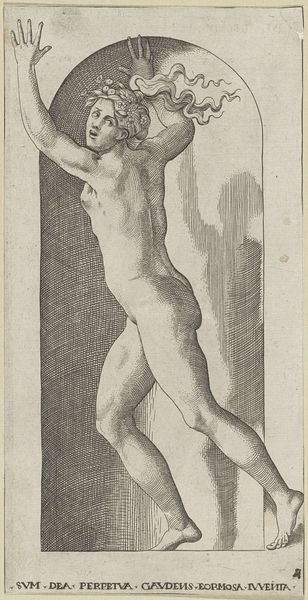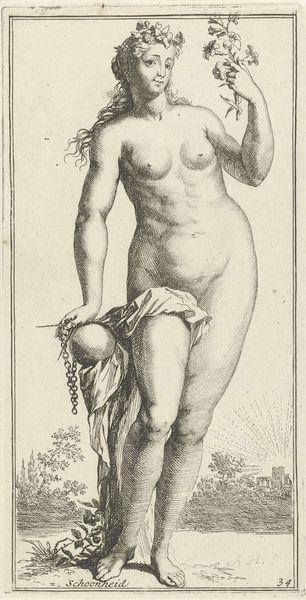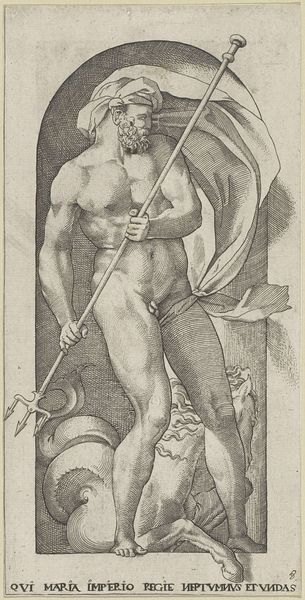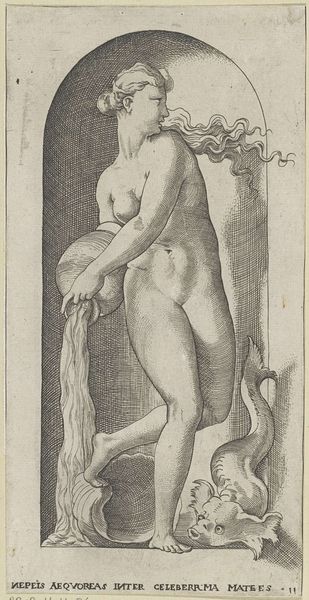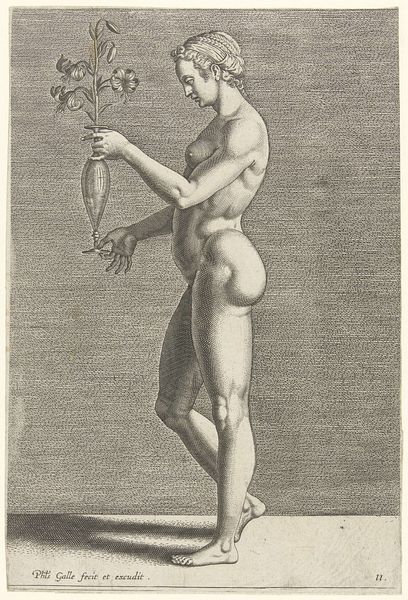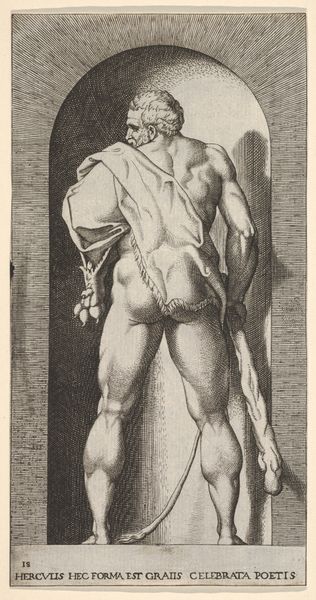
print, engraving
#
allegory
# print
#
old engraving style
#
classical-realism
#
figuration
#
11_renaissance
#
line
#
history-painting
#
northern-renaissance
#
nude
#
engraving
Dimensions: height 215 mm, width 107 mm
Copyright: Rijks Museum: Open Domain
Jacob Binck made this print of Ceres in the mid-16th century using the intaglio process. A metal plate, likely copper, was meticulously engraved with fine lines to create the image. Ink was then forced into these lines, and the surface wiped clean, allowing the design to be transferred to paper under high pressure. The resulting print showcases Binck's mastery of line and tone. The density of the engraved lines creates areas of deep shadow, which contrast with the highlights to model the figure of Ceres and her attributes: a sickle, torch and snake. The controlled marks capture the goddess of agriculture's solid, fertile form. Consider the labor involved: from mining the metal, to the skilled work of the engraver, the printer, and the paper maker. This print, like all early modern prints, was not only a work of art but also a commodity, reflecting the burgeoning market economy of the time. Appreciating the making of this print helps us understand its place in a world of artistic skill, commerce, and cultural exchange.
Comments
No comments
Be the first to comment and join the conversation on the ultimate creative platform.
